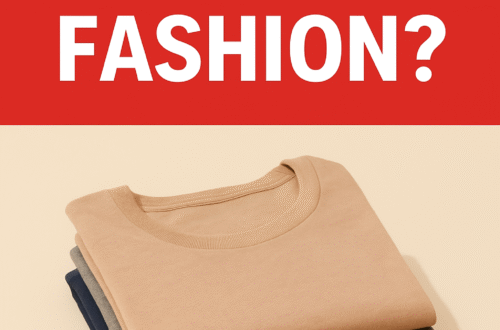Avant garde fashion is more than just clothing; it’s a statement. It’s the art of fashion in its most experimental and innovative form. This style pushes boundaries, challenges norms, and often looks like it belongs in a museum rather than on a high street. But what exactly is it, and why should you care about these often unwearable creations? Understanding this unique corner of the fashion world can change how you see clothing, art, and personal expression.
This type of fashion is about looking forward. The term “avant-garde” itself comes from French and means “vanguard” or “advance guard,” referring to soldiers who went ahead of the main army. In art and fashion, it describes pioneers who are ahead of their time. These designers create pieces that might seem strange or impractical now but often predict and influence the future of style. From exaggerated silhouettes to unconventional materials, avant garde fashion is a playground for creativity. It’s where rules are broken, and new ideas are born.
Key Takeaways
- Definition: Avant garde fashion is experimental, innovative, and pushes the boundaries of traditional clothing design.
- Purpose: It serves as a form of art and a laboratory for new ideas that can influence mainstream fashion.
- Characteristics: Key features include unusual silhouettes, unconventional materials, deconstruction, and a focus on concept over wearability.
- Influence: Many trends that become popular start as avant garde concepts on the runway.
Diving Deeper: The Core of Avant Garde Fashion
At its heart, avant garde fashion is a rejection of the commercial. While most clothing is designed to be sold to as many people as possible, avant garde pieces are often one-of-a-kind creations. They prioritize artistic vision over practical use. Think of a sculptor using clay or a painter using canvas; an avant garde designer uses fabric, and sometimes other materials, to create a three-dimensional piece of art. The human body becomes the pedestal for this art.
This approach allows for total creative freedom. Designers can explore complex themes, from social commentary to personal emotions, through their collections. The goal isn’t just to dress a person but to provoke thought and stir emotion. It’s a powerful form of storytelling that uses silhouette, texture, and form instead of words. Exploring a collection can feel like walking through an art gallery, where each outfit tells a different part of a larger story.
The Philosophy Behind the Movement
The philosophy of avant garde fashion is rooted in modernism and the idea of constant progress. It challenges the status quo by asking, “What else can fashion be?” It refuses to accept that a dress must look a certain way or that a jacket must be made from a specific fabric. This rebellious spirit is what drives innovation. By breaking away from traditional techniques and aesthetics, designers open up new possibilities for what clothing can represent. It’s a continuous experiment in form and function.
How Is It Different from Haute Couture?
While both avant garde fashion and haute couture represent the peak of design, they have different goals. Haute couture, which means “high dressmaking” in French, is about creating exquisite, custom-fitted garments using the finest materials and masterful techniques. It is luxurious and exclusive but still largely focused on creating beautiful, wearable clothing for wealthy clients.
Avant garde fashion, on the other hand, is not necessarily concerned with wearability or traditional beauty. Its main objective is artistic expression and innovation.
|
Feature |
Haute Couture |
Avant Garde Fashion |
|---|---|---|
|
Primary Goal |
Craftsmanship & Luxury |
Artistic Innovation & Concept |
|
Wearability |
High (for special occasions) |
Low to None (often conceptual) |
|
Materials |
Luxurious, traditional fabrics |
Unconventional, experimental materials |
|
Focus |
Perfect fit and finish |
Originality and boundary-pushing |
The Defining Characteristics of Avant Garde Style
Identifying avant garde fashion is about spotting its unique and often dramatic characteristics. These elements set it apart from everything else on the runway and in stores.
Unconventional Silhouettes
One of the most noticeable traits is the use of exaggerated or distorted silhouettes. Forget the classic A-line skirt or tailored blazer. Avant garde designers might create garments with massive, sculptural shoulders, dresses that balloon out in unexpected directions, or pants with dramatically wide legs. These shapes often alter the human form, turning the wearer into a walking sculpture. The focus is on creating a striking visual impact rather than flattering the body in a conventional way.
Use of Unorthodox Materials
While most fashion relies on textiles like cotton, silk, and wool, avant garde designers look everywhere for materials. You might see outfits crafted from plastic, metal, wood, recycled electronics, or even 3D-printed polymers. The choice of material is often part of the concept. For example, a designer might use trash to comment on consumer culture or employ industrial materials to explore themes of technology and the future. This experimental approach to materials is a core part of what makes avant garde fashion so exciting and unpredictable.
Deconstruction and Asymmetry
Deconstruction involves taking traditional garments apart and reassembling them in new, unconventional ways. This can mean visible seams, raw edges, and pieces that look unfinished or inside-out. Asymmetry is another key tool, with hemlines that are longer on one side, necklines that are off-kilter, or sleeves of different lengths. These techniques challenge our ideas of perfection and completeness in clothing, suggesting that beauty can be found in imperfection and chaos. You can explore some fascinating examples of this on platforms like the truefashionstory.com Blog.
Fashion as Performance Art
Many avant garde fashion shows are more like performance art than a simple runway walk. Designers create immersive experiences with elaborate sets, music, and choreography to present their collections. The show itself becomes part of the artistic statement. The late Alexander McQueen was a master of this, staging shows that included everything from rain-soaked runways to models interacting with robots. This approach emphasizes that the clothing is part of a larger conceptual world.
Pioneers of Avant Garde Fashion
The world of avant garde fashion is shaped by visionary designers who dare to be different. Their work has challenged the industry and inspired generations of creators.
Rei Kawakubo and Comme des Garçons
Rei Kawakubo, the founder of the Japanese label Comme des Garçons, is one of the most influential figures in avant garde fashion. Since the 1980s, she has been known for her radical, anti-fashion stance. Her collections often feature deconstructed, asymmetrical, and voluminous black garments that defy conventional ideas of beauty. Her famous 1997 “Lumps and Bumps” collection, with its padded, distorted dresses, questioned the very idea of the ideal female form and remains a landmark in fashion history.
Yohji Yamamoto
Another Japanese master, Yohji Yamamoto, is celebrated for his intellectual and artistic approach to design. Like Kawakubo, he often works with oversized silhouettes and a dark color palette. His designs are known for their masterful drapery and androgynous feel, creating clothing that is both poetic and powerful. Yamamoto sees his work as a rebellion against the fast-paced, trend-driven nature of modern fashion, offering instead timeless pieces that are rich in character.
Iris van Herpen
Bringing avant garde fashion into the 21st century, Dutch designer Iris van Herpen is known for her fusion of technology and traditional craftsmanship. She was one of the first designers to use 3D printing in fashion, creating breathtaking, sculptural pieces that seem to come from another world. Her work explores the intersection of nature, art, and science, resulting in garments that are both organic and futuristic. Van Herpen proves that technology can be a powerful tool for artistic expression in fashion.
Alexander McQueen
The late Lee Alexander McQueen was a true showman whose runway presentations were legendary theatrical events. His work was deeply personal and often explored dark, romantic themes drawn from history, nature, and his own life. McQueen was a master tailor who could create both exquisitely beautiful and disturbingly provocative garments. His ability to combine technical skill with raw emotion made him one of the most celebrated designers of his time.
The Influence of Avant Garde on Mainstream Style
You might think that these strange, unwearable runway creations have nothing to do with what you see in stores. However, avant garde fashion has a significant trickle-down effect on mainstream trends. The experimental ideas seen on the avant garde runway are often simplified and adapted for the commercial market.
An exaggerated shoulder on a conceptual piece might become a more subtle padded shoulder in a blazer a few seasons later. An asymmetrical hemline from a deconstructed dress could inspire the high-low skirts that become popular. Even the use of certain colors or fabric combinations can start in the experimental realm before becoming widespread. Designers for major brands look to the avant garde for inspiration, making it a crucial engine of innovation for the entire industry. This is how fashion continues to evolve and surprise us.
How to Incorporate Avant Garde Elements into Your Wardrobe
While you probably won’t be wearing a full-blown Comme des Garçons runway look to the office, you can incorporate elements of avant garde style into your personal wardrobe. It’s about embracing creativity and expressing your individuality.
- Play with Silhouettes: Try a piece with an unusual shape, like a top with voluminous sleeves, a pair of wide-leg pants, or an asymmetrical jacket.
- Focus on Texture: Look for garments made from interesting materials or with unique textures. A jacket with raw edges or a dress with unconventional pleating can add an avant garde touch.
- Embrace Asymmetry: An asymmetrical neckline or hemline is an easy way to add a bit of edge to an outfit without going too over-the-top.
- Think Monochromatic: Many avant garde designers, like Yohji Yamamoto, favor a monochromatic palette, especially black. An all-black outfit with interesting shapes and textures can be very powerful.
- Accessorize Boldly: If you’re not ready to commit to a full garment, try a piece of sculptural jewelry or a uniquely shaped handbag. Accessories are a great way to experiment with avant garde fashion.
The key is to have fun and not be afraid to stand out. Fashion is a form of self-expression, and adding a touch of the avant garde is a great way to show your creative side.
Frequently Asked Questions (FAQ)
1. Is avant garde fashion meant to be worn?
Often, no. Many avant garde pieces are created as conceptual art. They are designed to be displayed on a runway or in a gallery to showcase a designer’s vision and skill. However, some elements can be adapted for wearable fashion.
2. Why is avant garde fashion so expensive?
The high cost comes from several factors: the use of unique or custom-developed materials, the incredible amount of time and skill required to create each piece (which is often done by hand), and the fact that they are typically one-of-a-kind or produced in very limited quantities.
3. What is the difference between “avant garde” and “alternative” fashion?
“Alternative fashion” usually refers to styles associated with specific subcultures, like punk, goth, or grunge. While these styles can be unconventional, “avant garde fashion” is broader and more focused on artistic experimentation and innovation that is not tied to any single subculture.
4. Can men’s fashion be avant garde?
Absolutely. Designers like Rick Owens and the late Issey Miyake have created groundbreaking avant garde menswear for decades, playing with silhouettes, materials, and gender norms.
5. Where can I see avant garde fashion?
You can see it during major fashion weeks in Paris, London, and Tokyo. Many museums with costume institutes, like The Metropolitan Museum of Art in New York, also feature exhibitions on avant garde designers. You can also discover more about its history and impact on sites like truefashionstory.com.





